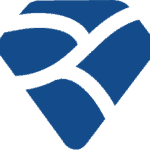Explore the resume and cover letter resources resources below. For more information, schedule an appointment with your school or college career center or Syracuse University Career Services team!
Resumes
Often paired with a cover letter, on average a recruiter spends 10 seconds (or less) reading a resume. VMock, the free 24-hour resume review platform available to current students, can help you get your resume ready in just a few minutes. If you’re hoping to meet with a career center, you can also upload your resume to VMock to prepare for these meetings.
Traditionally paired with a cover letter, a resume is a document used to highlight your professional experiences and skills when applying to non-academic internships or jobs.
- Used to apply to most non-academic jobs (e.g., consultant, engineer, accountant, etc.) where specific skills in a tailored document are the main reason an employer will hire you.
- Demonstrates that you have the skills and experience to succeed in an internship or job.
- If you have five years or less in your intended industry, resumes are typically one page. Exceptions may occur if your industry or unique academic and professional experience calls for two pages or more.
Often used to apply for faculty positions, grants, fellowships or research positions within an academic setting, crafting a unique curriculum vitae (CV) will help highlight your teaching skills and experiences among fellow candidates.
- Showcases your academic achievements, including the research you’ve conducted, classes you’ve taught, articles you’ve published and conferences where you have presented.
- Typically no shorter than three pages, there is no limit to the length of a CV, as long as you’re showcasing your academic achievements.
- It is customary to list your references with their full title and contact information.
- Explore resume examples for inspiration and create your own. You can start this process using VMock.
- Make a list of experiences (e.g. paid, unpaid, on-/off-campus or volunteering) and organize them by section and relevance to the position you are applying for.
- Based on the position you are applying for decide what you would like to include (e.g. education, summary, skills, involvement, awards and more).
- Clearly present your contact information, including, but not limited to, your LinkedIn and related portfolio site (if applicable).
- Rank your experience based on the internship or job description, while keeping relevant information at the top.
- Always include name of organization, your title, dates worked and locations for every position.
- Keep descriptions succinct and emphasize your role by using clear, vivid language.
- Take the “I” out of your resume. Instead of “I assisted staff with database management,” say “assisted with database management.”
- Quantify when possible. Numbers stand out on a resume.
- Start each description with an action or power verb.
- Customize your section headings. Instead of “Experience,” create custom headings to emphasize what you have done, for example, “Biotech Research Experience.”
- Remember there is no one right way to write a resume. Your experiences are as unique as you are.
- Consider creating your resume in VMock or InDesign (when appropriate and relevant to your industry).
- Proofread and stay consistent. Use the same font, font size and match the headers of your cover letter and resume documents.
Explore VMock, the 24-hour resume review platform.
Cover Letters
Help introduce your resume and set yourself apart from fellow candidates with a dynamic cover letter.
A cover letter accompanies the resume when submitting an internship or job application. It is an opportunity to highlight your unique experiences, skills and personality, providing an opportunity to convince an employer that you’re a good fit for the position.
- Grab the reader’s attention with a relevant accomplishment or detail that will differentiate you.
- Use the job description to write your cover letter. While reading, identify key skills and details requested.
- Use your cover letter to connect your personal story and emphasize how you can provide those requested professional skills. Focus on what you can contribute.
- Draw upon previous internships, jobs, academic work, volunteering and personal projects.
- The cover letter should be less than one page and easy to read. Avoid large blocks of text.
- Talk achievements, not duties. “Recruited 85 new members for my student organization” sounds more impressive than “responsible for the recruitment of new members.”
- Proofread and stay consistent. Use the same font, font size and match the headers of your cover letter and resume documents.
- Print out the internship or job opportunity description.
- Highlight skills, qualifications and experiences that resonate with you.
- Enter the job description into a word cloud platform (e.g. tagcrowd.com). What are the top skills, key words or qualities they are looking for?
- Look through your resume. Do you have experiences or skills that match what is being looked for? Expand and emphasize on them by including key words from the description.
- Identify three to four skills from the job description to highlight and provide examples of in your cover letter.
- Don’t forget to proofread!
View our resource that reviews formatting and example sections for you to explore.





